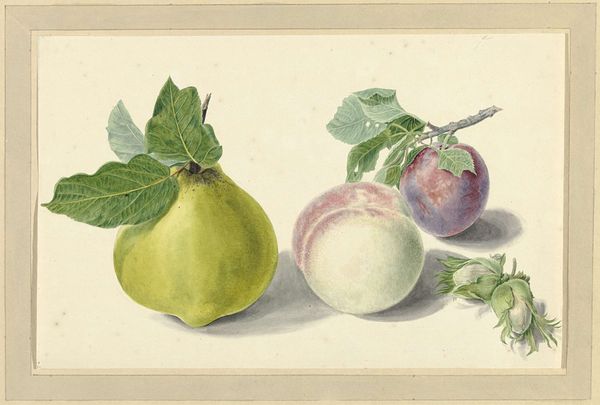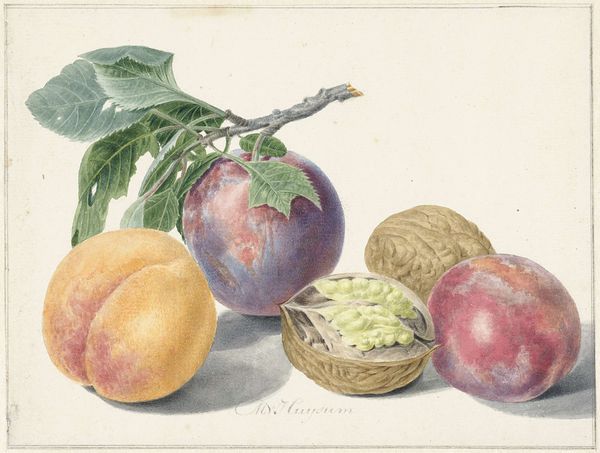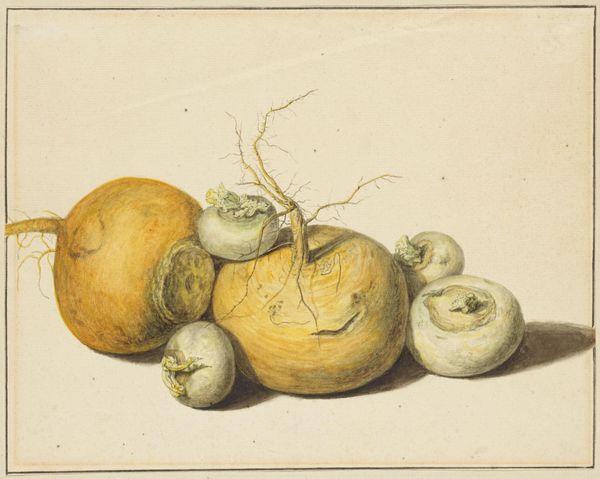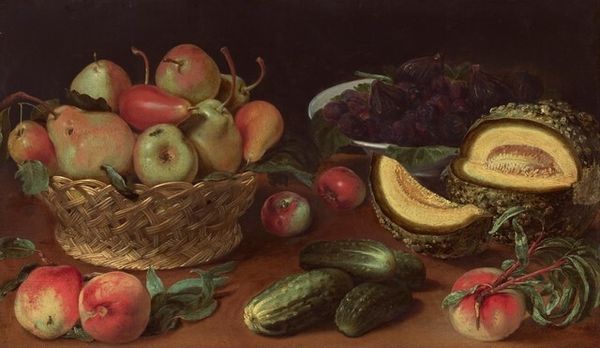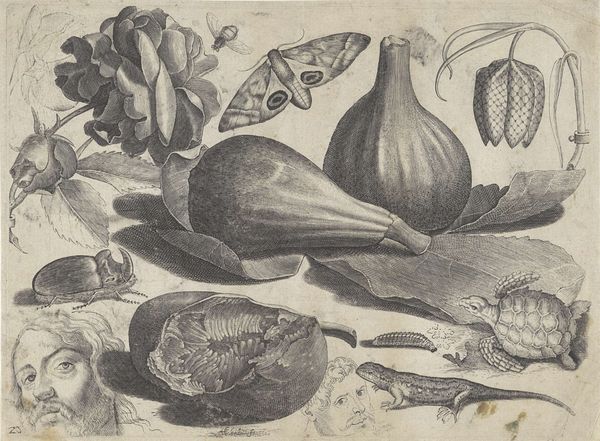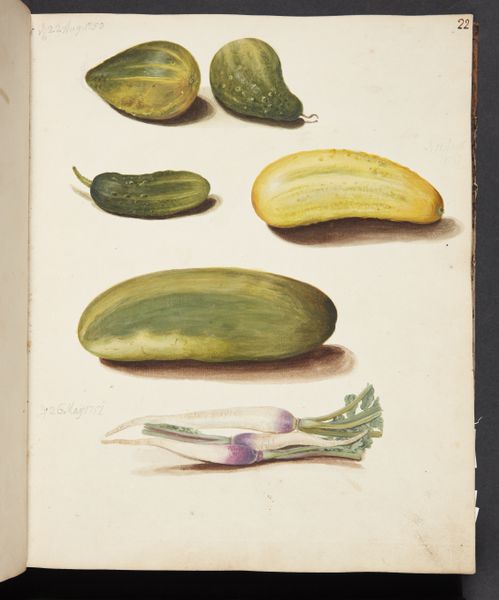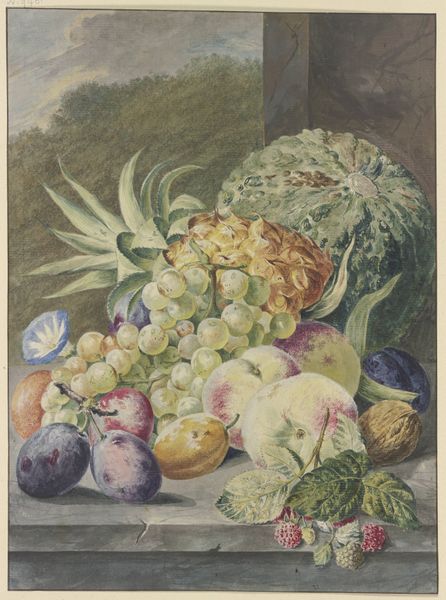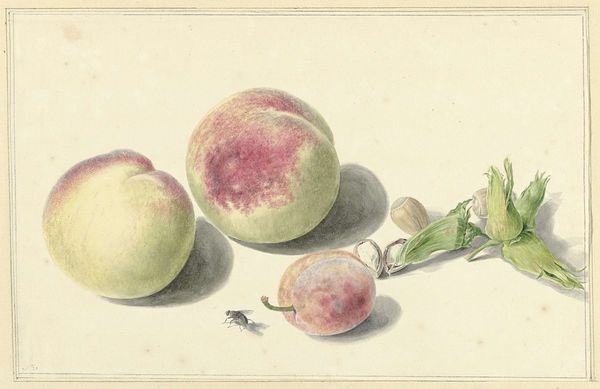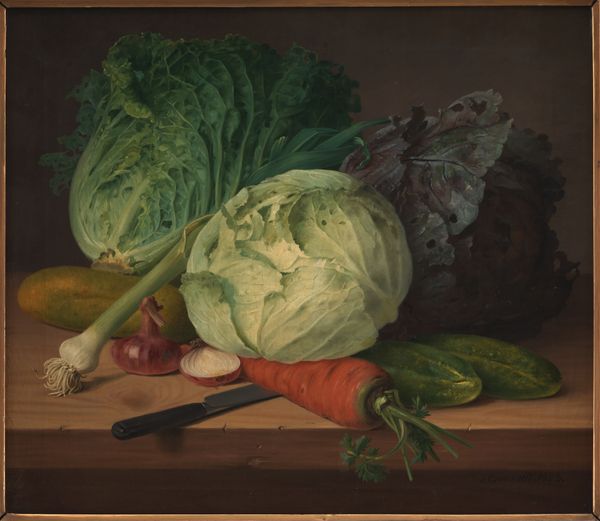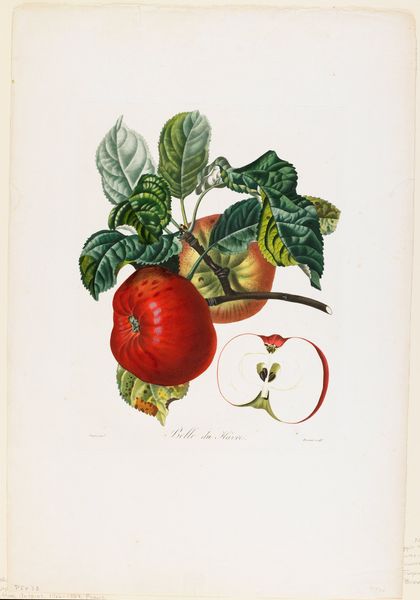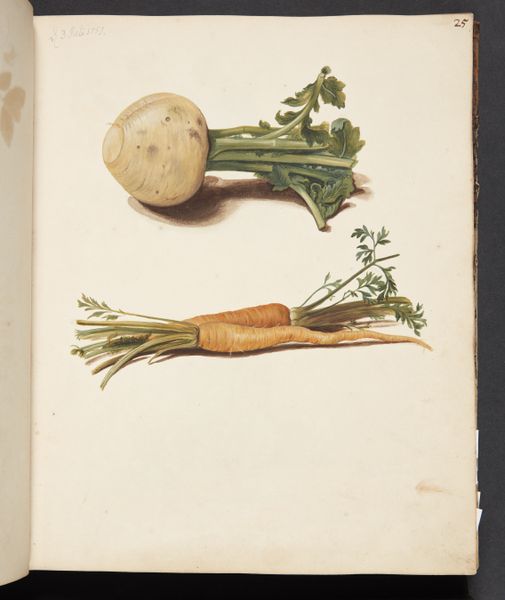
#
egg art
#
possibly oil pastel
#
oil painting
#
food illustration
#
stoneware
#
fruit
#
food art
#
watercolour illustration
#
botanical art
#
watercolor
#
warm toned green
Dimensions: height 259 mm, width 365 mm
Copyright: Rijks Museum: Open Domain
Curator: I'm struck by the contrast between the velvety peaches and the rough gourd; it’s an interesting study of texture. Editor: Let’s delve into this delightful composition. This artwork, “Kalebas, twee perziken en een walnoot” was created by Michiel van Huysum sometime between 1714 and 1760. It's quite striking, wouldn't you agree? Curator: Striking indeed. Look at how Van Huysum rendered the surfaces: the gourd looks almost stoneware-like. I wonder if he was exploring the market appeal of certain types of imported food items? Editor: Ah, now you're getting into it. The objects themselves... peaches, gourds, walnuts...they are ripe with symbolism. The peach, often linked to longevity and immortality. And the gourd's vine, stretching suggestively upwards, maybe hints at prosperity and growth. These wouldn't have just been simple representations of foodstuffs. Curator: Possibly. Or, practically speaking, the image reflects what consumers found beautiful, and perhaps even fashionable. Did people actually *eat* this squash? The image itself creates desire, driving market demands in the 18th century. It also draws attention to new forms of botanical illustration at the time. I can't help but wonder about Van Huysum's workshop, his apprentices... the economic context of producing this image for consumption. Editor: Good point! There is certainly a sense of accessibility and inviting consumption through this display of natural commodities. Consider though: is it a carefully considered gathering, designed to evoke themes of abundance, or a study about a still life's components, all under the discerning eye of the painter? Those slightly asymmetrical walnuts add to the natural feeling... a delicate interplay. Curator: The meticulous layering, and transparent washes create subtle surface effects, especially noticeable on that central peach. Think of all the materials needed: quality brushes, pigments...the sourcing, grinding, and mixing by hand... and also who paid for them. That says as much about this picture as the imagery itself. Editor: It enriches the layers, literally and figuratively, doesn't it? A confluence of history, desire, technique... fascinating. Curator: Precisely. Now, I am curious about its impact today. What is captured from this representation now? Editor: A perfect image—a moment from history made new again. It’s something about the eternal dance between object and meaning, all captured in a beautifully crafted picture.
Comments
No comments
Be the first to comment and join the conversation on the ultimate creative platform.
